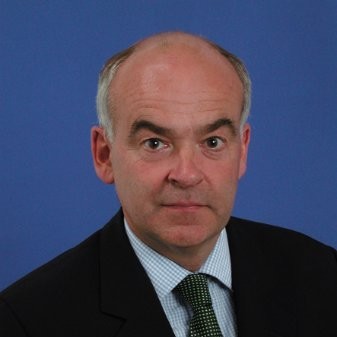The Complete Guide to Corporate Alumni Event Planning in 2025
This expert guide equips you with everything you need to know to create vibrant and engaging events that elevate your corporate alumni program.
Read more
The former Managing Director in Citibank’s Corporate and Investment Bank shares his experiences building the company’s EMEA alumni program.

In the first of this series of five, I put forward the case for having alumni programs and outlined some of the benefits that we (at Citi) experienced in tapping alumni for revenue generation, recruitment and branding. The results were tangible and quantifiable over my five years spent establishing an EMEA-wide program and so I’m only too keen to spread the word. A rising tide can benefit us all.
I believe there are common approaches to enhancing success that reach beyond the absolute necessity of defining your objectives at the outset and sticking with the program for the long-haul. Understanding your organisation’s employer value proposition and what’s special about it (“super-power”) is critical to the first and measuring performance vital to the second. The initial business case has to be sold internally and then tracked, measured and tweaked on an ongoing basis.
The building blocks of a successful corporate alumni network that this article will focus on include the make-up and out-reach of the alumni team, the importance of in-person events and the need for budget and platform.
Perhaps most important is the appropriate staffing of what I called our alumni liaison team. These are the 5 roles I recommend should be included in your team:
First and foremost, these programs need their senior sponsor, alumni champion and front-face. Ideally, someone well known within your organisation and empowered with corporate clout. The more senior the appointment, the more certainty on budget support and longevity. It naturally helps if that person (CEO in my case) has been around your organisation for a prolonged period, truly understands the culture, legacy and history, and has wide-ranging and healthy relationships across all products, businesses and geographies.
Sometimes that person proposes and initiates an alumni program themselves but sometimes you need to approach them from lower down the chain. If you don’t ask you don’t get. C-suite sponsorship may be quite normal in financial services but “top down” support may not be typical elsewhere. Always try to find it regardless!
After having found your senior sponsor, then there’s the need for an orchestrator and point person. At least, one (quite) senior, full-timer as Alumni Director. To serve as the connector and navigator for past and present colleagues. The skill to this role is constant networking. Whenever alumni shared stories or news, I hoped to “match or raise them one” with other snippets and human interest stories about their peer groups, gathered from constantly attending events and picking up the phone, whenever invited. I even took the external exams and served two terms as MNTD of Citi’s UK pension fund with the sole intention of connecting with our pensioners (elder alumni demographic) and tapping some extra marketing and communications budget with which to get the news out about our alumni team.
Naturally, you can’t do it alone and that means reaching out for help from far and wide. Structuring any successful team needs “socialisation”, so that more folk (particularly one’s “super-connectors”) get to hear of it. You need to engage your best business professionals from every possible area. To have them support you, often without it being their main or only role. Even an hour or day a month helps no end.
This strategically-placed assistance should certainly cover HR, corporate communications, marketing, events management, social media, branding, legal and compliance. In the end, your working group might run to 20+ and you have to convince each individual business and support function on why alumni benefit them. This is needed in order to generate your internal marketing army. I understand that one size doesn’t fit all and that in smaller organisations, the “cavalry” might not exist. But there will always be a hard core of like-minded helpers. Start small and grow by focusing on the low-hanging fruit.
Supporting me further was a wide network of alumni delegates appointed or volunteered from every priority country and normally sourced from HR or marketing professionals. This meant we could adjust approach for local audiences, markets and nuances. Motivating and enthusing this regional network was easily done by conference calls and sharing of best practices and success stories. Plus convincing them that networking with extended family, friends and colleagues could be fun for all concerned.
Finally, we tapped into external alumni ambassadors in the five largest markets. These were senior alumni with the gravitas, popularity and available time to help out. They were useful in connecting directly with alumni and feeding back candid insights and suggestions. Rather like a best man at a wedding, responding on behalf of the bridesmaids, we regularly had them take the microphone at alumni events, to represent (and amuse) the alumni cadre. That ensured that two-way interchange prevailed and that we avoided any possible risk of too much self-marketing and corporate speak.
My mantra was never to be shy or embarrassed about alumni wanting to have fun and we managed plenty of it. Connecting with colleagues, past and present was the No 1 attraction of the network (92% of alumni told us that via questionnaires from the beginning) and tailored events were the quickest and best way to provide that opportunity. But some order needs to be brought to the party planning and so our key principles were simple.
1. Get your invitations out well ahead of time. Three months was my target for high level events as the grander your guest list, the busier their calendars.
2. Expect and budget for up to 1/3 of your acceptances to no-show on the day. Don’t take this personally. Unforeseen work commitments, family emergencies, weather and public transport challenges can all come into play.
3. Be sure to circulate guest lists internally and widely beforehand. That way bankers arrived prepared and could specifically look out for useful alumni they intended to meet.
4. Be sure about getting HR attendance as career development ranks top of guest’s intentions and always have a super senior take the microphone and welcome guests but not for too long. Senior alumni want to be rubbing shoulders with peer group, and corporate messaging on the value and benefits of alumni engagement is best relayed from that level.
5. Provide a centrally approved events budget. That allowed us to host over 145 gatherings across 45 EMEA countries, with 4000 alumni attending, in the first five years. Above all, it meant that countries didn’t have to prioritise between competing spend on alumni, clients and employees. We would always stand behind events for the former assuming they were going to be cost effective, well-planned and well-attended. By having the alumni team review all requests, we could also control against any possible “extravagance” and double-check guest lists for unintentional bias favouring individual businesses or demographics at events.
But involving alumni doesn’t only have to be through bespoke events. Training class reunions, alumni retirements and milestone events certainly accentuate what made alumni feel great about their times with you in the first place. But the cheapest and easiest way is to repurpose, “tag-team” and tap into what’s already happening. Access to training courses and sector conferences plus boosting attendance at gatherings hosted by your affinity groups, such as Pride month, veterans networks and International Women’s Day all served to create linkages between past and present colleagues.
Finally to data. I’m no skilled data miner myself (thankfully I had others to preform that role) and it’s not my intention to soft-sell EnterpriseAlumni but you really do need to have a handle on the data. Normally that’s best done via software platforms which needn’t necessarily be that expensive. They help no end with automation, providing better experiences for users and getting the right marketing materials in front of project managers.
You need to collect and understand your data in order to drive change and continually improve the program. What you can measure you can address and fix. Initially, we cobbled together contact lists on spread sheets after trolling around the MD network for alumni referrals and leads. We got scrappy on registrations and did the grunt work ourselves but subsequently we gravitated to the rather more commoditised, third-party provider versions. That was undoubtedly a right decision, all the more so as the volume and sophistication of alumni outputs should grow over time.
In conclusion, I should admit that none of this is quite as easy as it sounds. It takes energy and enthusiasm. Living, eating and breathing alumni has to come naturally for those on the team. When it does, it’s contagious. Alumni want to be loved and supported just as much after leaving, as when they were with you. So that should mean you have a responsive, almost captive, audience. Wind them up and point them in the right direction (hopefully using some of the approaches outlined) and I can guarantee you should have fun, success in recruiting and positive impact on your business and brands. Good luck and I’m out there to help.
Part 3: How Will an Organization Benefit from Having an Alumni Program?
Richard is the former Managing Director in Citibank’s Corporate and Investment Bank and Alumni Director responsible for successfully building its EMEA alumni program, at the personal request of CEO post-2012. Chief of Staff to two Vice Chairmen (former Dutch Minister of Finance and former Director General of the WTO) plus secretariat to several Advisory Boards, most recently at London Stock Exchange. Former MNTD of Citibank’s UK Pension Fund, Fellow of the Royal Geographic Society and Graduate of Cambridge University onto whose Alumni Advisory Board he has also recently been appointed.
NEWSLETTER


This expert guide equips you with everything you need to know to create vibrant and engaging events that elevate your corporate alumni program.
Read moreDecember 27, 2024
Use these 5 best practices to ensure your alumni network is bringing the most value to both you and your former employees.
Read moreSeptember 8, 2023
To maintain a relationship with your corporate alumni for sales & recruitment, having the right team in place to drive your engagement is critical.
Read moreApril 10, 2023
Build new revenue streams, save on recruitment and enhance your employer brand, all through the power of alumni.